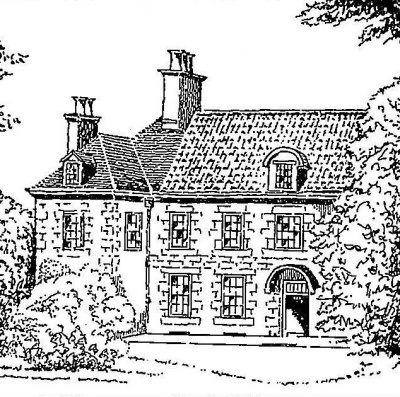Historic Jersey buildings
If you own this property, have ancestors who lived here, or can provide any further information and photographs, please contact us through editorial@jerripedia.org |

Property name
Grainville Manor
Other names
- Grainville
- Grainville House[1]
Location
Deloraine Road, St Saviour
Type of property
Former 'manor house', demolished in late 20th century to make way for Grainville School. 19th century census returns indicate that the property had a separate farm and a lodge
Families associated with the property
- Poingdestre
- Godfray
- Scott
- Johnstone
Census returns
1861
The house was occupied by the Johnstone family. Montague Cholmeley Johnstone (1804- ) a Major-General born in Scotland, lived there with his wife Louisa Leonora, nee Somerset, born at the Cape of Good Hope; sons Montague, born at sea; Frank, born in India; and Robert Fitzroy Maclean, born in Jersey in 1859; and daughters Mary, Louisa, Edith, all born in India and Mylie, Robert Fitzroy's twin sister. The family employed a nurse, cook, two under cooks and a housemaid. The farm was occupied by George Walford, and the Lodge by gardener John Strang, his wife Isabella and their three children, all of them from Scotland.
'1871
Edward G Poingdestre (1839- ) was living at the house. He had a visitor staying with him and they were looked after by a footman, a cook and a housemaid. Gardener Nehemiah Everett lived in the lodge with his wife and the farm was occupied by Jules Arsene Bienaime Maunoury, born in Nehou, Manche, Normandy, with his wife Elizabeth, nee Saunders, two sons and three daughters, all born in Jersey. The couple, who were married in St Clement on 3 June 1851, had seven children in total and their son, Thomas George, who married Clara Esther Bisson, at St Saviour in 1883, had a son and five daughters.
1881
The house was occupied by wine merchant Warren Hunter Aubin (1839- ) and his cousins Henry Dudley Scott (1869- ), Charles Hepburn Scott (1871- ) and John Scott (1875- ), with a housekeeper and general servant. The Manoury family were still working the farm. The area farmed had fallen from 40 acres in 1871 to 35. There is no mention of the Lodge in this census.
1891
The house had now been acquired by retired Colonel Sir James Godfray (1815- ) who lived here with his wife, shown in the census as Elvina, but in their marriage record as Albina Elizabeth Ingouville (1823- ), daughter of George. James, baptised Jacques, was an Advocate at the time of the marriage in 1844, the son of Royal Court Greffier Francis Godfray. They had two daughters living with them at Grainville House in 1891, Florence (1866- ) and Georgina (1869- ) who was married to Thomas Lucas (1860- ), who was also in the household. The family had a cook and a parlour maid.
1901
This was the first census to show the property as Grainville Manor. The head of household is shown as E A Godfray (1822- ) but this must be an error for James, because Florence is still living at the house, shown as the daughter of the head. She had married George Powell Stewart in 1895. He is not shown as present in the house at the time of the census, but their two sons and a daughter are. There were also three servants.
Both the Lodge and the Farm appear in this census. The former was occupied by poulterer George Baker (1848- ), his wife Jane, son George and daughters Edith and Mabel. The farmer was another Frenchman, Noel Gorvelle, who lived with his French wife Augustine, nee Jouanne, and their teenage son Francis and daughter Celine, both born in Jersey. Noel's widowed cousin Marie Houssin and two other farm workers were also living here.
Historic Environment Record entry
Listed building
Site of Georgian period house, demolished late 20th century.
Old Jersey Houses
The entry in Volume 2 notes that the property was associated with the Poingdestre family, but 'passed to others' in the 19th century. It was converted into flats in the 20th century and deteriorated badly before its eventual demolition.
- "Most of the internal woodwork appeared to be of about 1830 or later, but the cellars, which were on ground level on the north, had far earlier woodwork of good quailty."
The house was certainly built by 1809, when it was referred to in J Stead's A Picture of Jersey as 'a good modern building'. In about 1820-1830 it was enlarged, a two-storey house being built over the existing one.
The house was acquired by the Scott family in 1873, and then sold to Sir James Godfray, whose grandson eventually sold it.
The author refers to claims that an oak tree in the grounds had been there since 1066. [2]
Further article
Notes and references
- ↑ As found in census returns. A more accurate description of a house which was not the manor house of the fief in which it stood
- ↑ This is unlikely, because although oaks are reputed to live for up to 1,000 years, this would make it among the oldest ever dated. Jersey's often windswept landscape is not conducive to trees reach such antiquity

